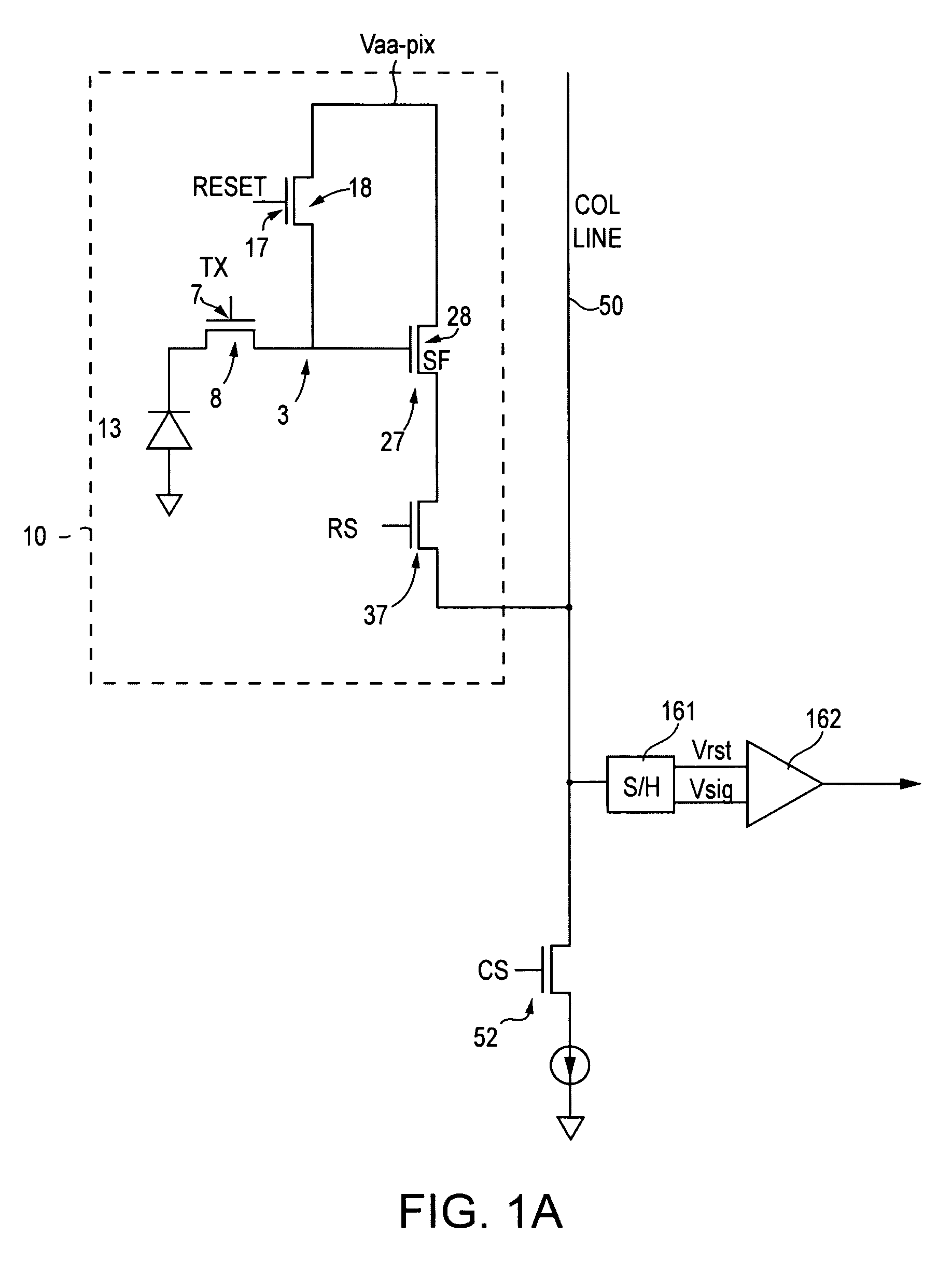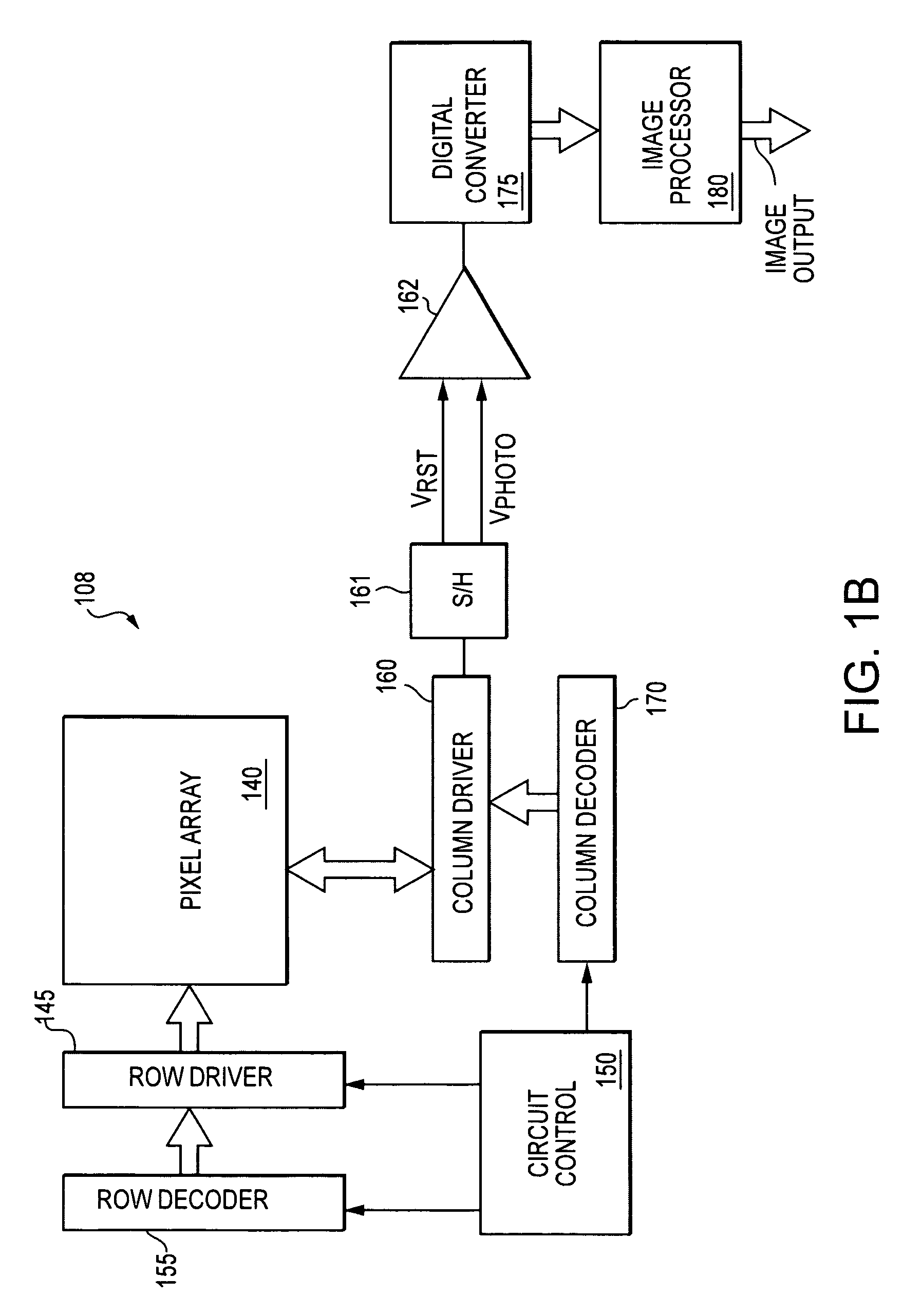Rolling shutter for prevention of blooming
a technology of rolling shutter and shutter blade, which is applied in the direction of color television details, television system details, television systems, etc., can solve the problems of exacerbated blooming problems, insufficient shutter technique compensation, and distortion of images
- Summary
- Abstract
- Description
- Claims
- Application Information
AI Technical Summary
Benefits of technology
Problems solved by technology
Method used
Image
Examples
Embodiment Construction
[0029]Referring now to FIGS. 3A-3D, a portion of a CMOS pixel array 140 is shown. The array 140, overexposed pixel 210 and bloom region 211 have the same designations as discussed above with respect to FIGS. 2A-2F. A rolling shutter according to present invention, controlled by control circuit 150 (FIG. 1B) and having read row 300 and hard reset rows 301-305 (Y=5), is also shown. The integration time X of the rolling shutter is 10 rows, as in FIGS. 2A-2F. Thus, as each row 300 is sequentially read (designated as row N), rows 301-305 will simultaneously be hard reset (designated as rows N+X through N+X+(Y−1)).
[0030]Thus, referring now to FIG. 3A, as row 5 is the read row 300, rows 15-19 are hard reset. By hard resetting multiple rows, a much more significant portion of the bloom region 211 is hard reset before integration, thereby making it more difficult for the overexposed pixel to deflect or overflow electrons into rows that are still being integrated and being, or about to be rea...
PUM
 Login to View More
Login to View More Abstract
Description
Claims
Application Information
 Login to View More
Login to View More - R&D
- Intellectual Property
- Life Sciences
- Materials
- Tech Scout
- Unparalleled Data Quality
- Higher Quality Content
- 60% Fewer Hallucinations
Browse by: Latest US Patents, China's latest patents, Technical Efficacy Thesaurus, Application Domain, Technology Topic, Popular Technical Reports.
© 2025 PatSnap. All rights reserved.Legal|Privacy policy|Modern Slavery Act Transparency Statement|Sitemap|About US| Contact US: help@patsnap.com



